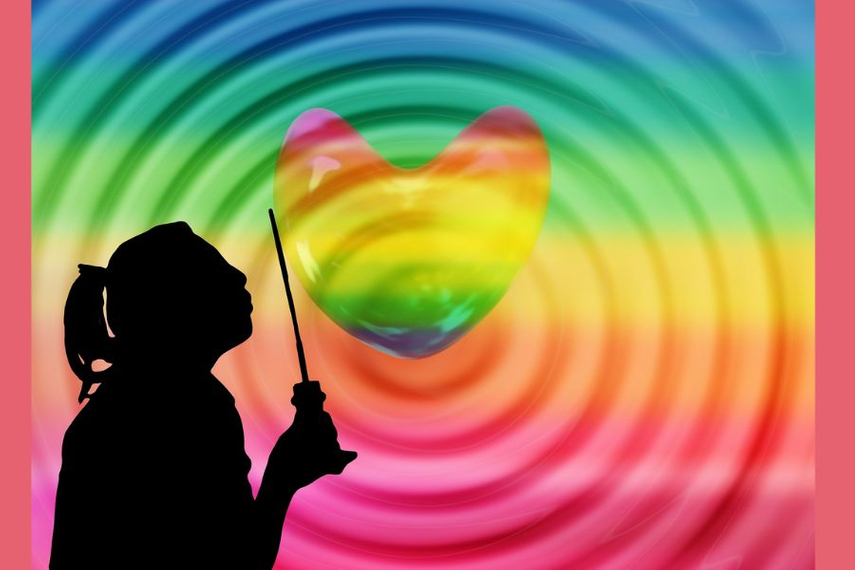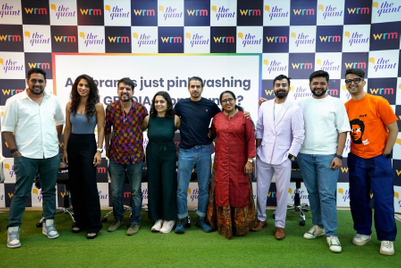
Coming from a family of writers and filmmakers on my maternal side meant I got a bird’s eye view of the film and media industry. My mother was a successful advertising producer, which allowed me to accompany her on shoots. That exposure made me realise that I wanted to become a director when I grew up.
My education from a film school in the UK further whetted this passion. However, simultaneously I was worried if and how my queer identity would be accepted upon my return back to my homeland.
The reason for my concern was in that the rainbow community wasn’t legalised back in 1992, which was when I was in this quandary. Moreover, there were no queer role models aside from a gaggle of swishy men who were in the dance, fashion and hair or make-up side of the industry.
I was both fascinated and uncomfortable with this aspect. I was convinced I could not be a director and be open about my preferences. At the same time, I did not want to hide my real self and lose out on my professional opportunities. I simply didn’t know how to negotiate this conundrum.
Accepted and appreciated
The advertising industry seemed the best place to start as it had cosmopolitan people like us. I was fortunate to start working at Genesis Film Productions for the legendary Prahlad Kakkar, whom I had known as a pre-teen. While Kakkar was wonderful towards me, I could not say the same about the industry.
I was doing fine as an assistant director, but homophobia and sexism were very much the order of the day. It was considered to be surrounded by crass conversations and derogatory jokes about women and queer people.
It was difficult to be my authentic self, though I had slowly begun the inevitable process of coming out to my family and friends. I came from a liberal background where my maternal grandmother, Ismat Chughtai, had been taken to court in 1945 for her short story ‘Lihaaf’ because of its queer theme. She would often tell me to live the one life I had to the fullest. I cringe at all the lies and falsehoods I spun to fit in, though I am unsure if I succeeded in convincing anyone.
As luck would have it, around that time, Ambience Advertising was expanding and looking to start its film department. Founders Ashok Kurien and Elsie Nanji offered me a job there after Genesis produced an ad film for them. It was then the reigning creative agency with a wonderful roster of cool work, clients and creatives, and I was happy to become the executive for their first film.
Soon, I was promoted to film chief, and our department grew substantially. We won awards and even directed and produced our in-house work. The stress and deadlines notwithstanding, it was exciting and Nanji looked out for her creative team. I opened up to her about my queer identity, and knowing I had her support and that of my fellow creatives made it easier to negotiate the corporate landscape. As long as I delivered, all was kosher.
With globalisation and the markets opening, India was moving towards a liberal environment. I was gaining confidence in my privilege and myself, starting to live my queer life. Our rainbow community was growing, helped immensely by the internet and some underground nightclubs. I started dressing queerly, but even then, Ambience Advertising was a rare safe space where no one batted an eye.
Flying solo with clipped wings
The real issues began later when I branched out to set up my own little production company. Channel V had taken the youth by storm, and I was a VJ on a show called ‘Fashion Police,’ which involved a lot of camping it up. Little did I realise that all this would prove difficult for me as a director and producer. The stereotype for successful directors seemed to be Stetson hat-wearing, cigar-smoking, macho cis-male in the 40-50s age group.
Where would I even begin? I was young at 27, and the ads I did were all commissioned by women creative directors, save one kind gent who seemed oblivious to my sexuality.
I recall doing a film for a shampoo brand, and the creative director, who was a friend, replaced me. I was numbed when she later told me that their film executive and client manager refused to work with a queer, and in the interest of her team, she had to had to take up the role.
At another client preproduction meeting, a brand manager insisted on making homophobic jokes, likening his brand to ‘strong men, not for pansies'. Members in the board room roared with laughter while I squirmed.
It was hard finding work, though in hindsight maybe I was not baked enough to take on running a company. I persevered on, though my portfolio was filled with ‘soft pink’ films, and I couldn’t break out of Barbie Land. I wondered if my blatant coming out was the obstacle or my abilities.
This did not last long as soon, production houses began forming panels of directors, and I was quick to jump aboard with ‘Film Farm’ (now Firecracker Productions) to do a few more years of advertising primarily in Sri Lanka. I loved, and thrived in, this stint, as I was seen for my talent as an Indian director and was offered their best brands.
The pot of happiness at the end of the rainbow
The queer community was finally de-criminalised in 2018, ending centuries of colonial law. This led to a huge coming out by individuals on many social, cultural and personal levels.
It is truly amazing now to be directing across streams and to be called in to work on gender and sexuality themes. Directing a queer love story for a toothpaste—ironically the same behemoth brand where I endured the homophobic pre-production meeting—shows how far we have come. My heart sang with joy when everyone across the board was in absolute support.
I was fortunate to be a series director for Netflix India’s first documentary series ‘The Big Day’ centred around Indian weddings. I was delighted when the producers at Condé Nast and Netflix were excited to include a gay wedding on the show, which became the number one show in India and trended in other countries.
I have since grown to be a queer-affirmed mental health counsellor and podcast host, made queer-themed documentaries, acted, written, and worked on developing and directing gender content with little traces of my younger self.
It is high time that ad agencies and clients are truly inclusive to all diversities, as research has proven that those who do, have far richer and more diverse content, along with happier, productive employees. The world has moved on, and it is now uncool to be sexist, racist, or homophobic.
Ashish Sawhny (He/Him) is a filmmaker, mental health counsellor, podcast host, actor, and writer.



.jpg&h=334&w=500&q=100&v=20250320&c=1)
.jpg&h=334&w=500&q=100&v=20250320&c=1)


.jpg&h=334&w=500&q=100&v=20250320&c=1)

.jpg&h=334&w=500&q=100&v=20250320&c=1)


.jpg&h=334&w=500&q=100&v=20250320&c=1)

.jpg&h=268&w=401&q=100&v=20250320&c=1)
.jpg&h=268&w=401&q=100&v=20250320&c=1)

.png&h=268&w=401&q=100&v=20250320&c=1)


.jpg&h=268&w=401&q=100&v=20250320&c=1)
